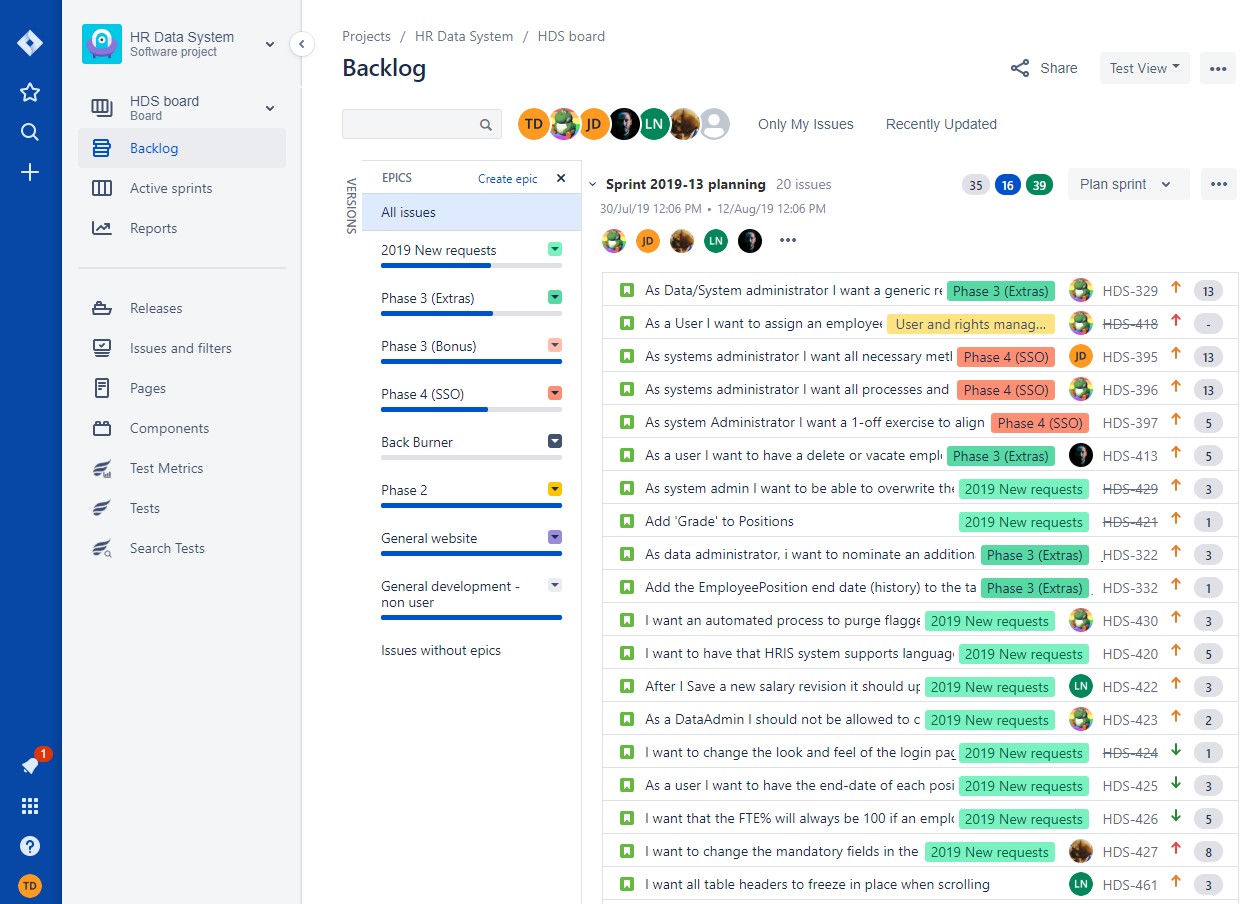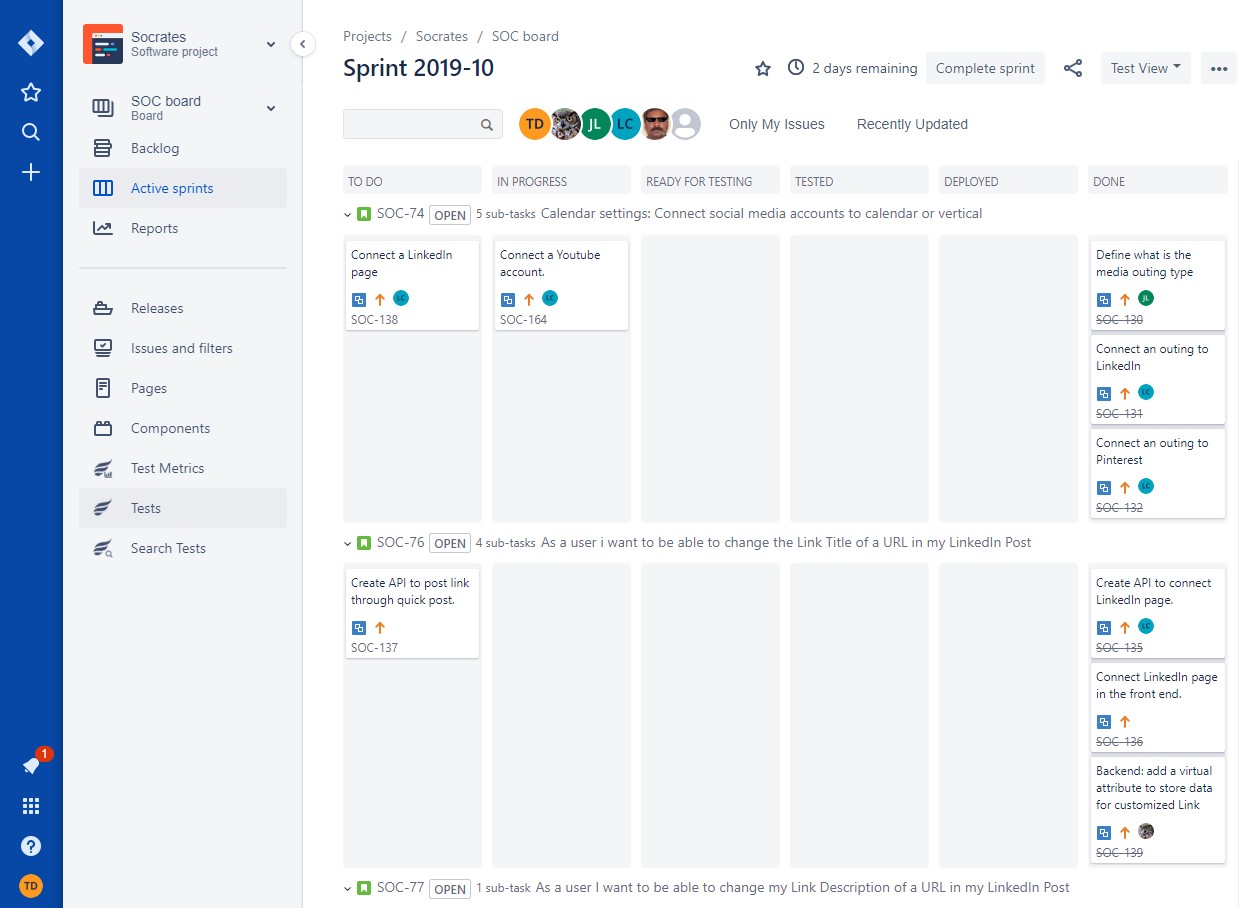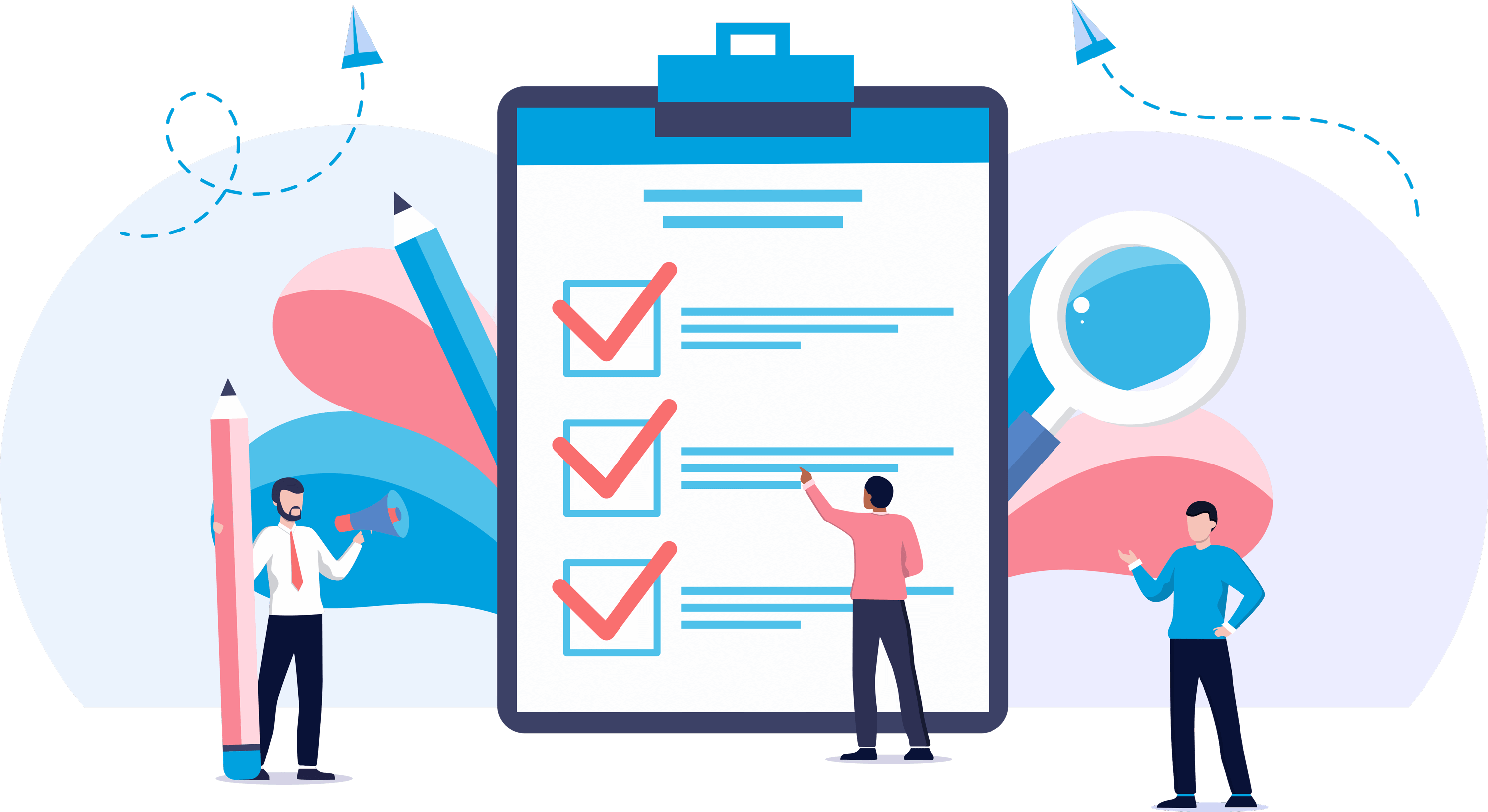Our Process
The best way to get a project done faster is to start sooner.
The best way to get a project done faster is to start sooner.
Scrum is an iterative and incremental software development methodology for managing product development. It focuses on building software that meets business needs.


A quick overview of the Scrum framework
A product owner creates a prioritised wish list / requirements called a product backlog.
During sprint planning, the team pulls a small chunk from the top of that wish list, a sprint backlog, and decides how to implement those pieces.
The team has a certain amount of time (a sprint) to complete its work, but it meets each day to assess its progress (daily Scrum).
Along the way, the Scrum Master keeps the team focused on its goal.
At the end of the sprint, the work should be potentially shippable: ready to hand to a customer, put on a store shelf, or show to a stakeholder.
The sprint ends with a sprint review and retrospective.
As the next sprint begins, the team chooses another chunk of the product backlog and begins working again.
The cycle repeats until enough items in the product backlog have been completed, the budget is depleted, or a deadline arrives. Which of these milestones marks the end of the work is entirely specific to the project. Scrum ensures that the most valuable work has been completed when the project ends.

It begins with conceptualizing. What features must be implemented and how to achieve this in a way that caters to the client's needs. We carefully think through the necessary steps to ensure the utmost quality of software or mobile applications.
We don't just create plans. We execute them. The next phase is implementation, where great ideas are brought to life by our talented development team. The goal isn't merely starting the project; we intend to go beyond and exceed expectations.
The final phase is trial and error. Find what works best, rinse, and repeat until we achieve the desired outcome. We collaborate with the client regularly in measuring project progression, so they can monitor if everything aligns with their vision and adapt accordingly if otherwise.
Innovation requires dedication, hard work, and discipline.



We must meet the definition of 'done' to ensure quality.


The code for the backlog item is completed
The code is commented, and checked in current version of source control
Peer reviewed (or produced with pair programming) and meets development standards
Build has no errors
Unit tests written and passing
Deployed to system test environment and passed system tests
Passed UAT (User Acceptance Testing) and the status updated on the project board
Build/deployment/configuration changes implemented, documented & communicated
Relevant documentation/diagrams produced and/or updated

Develop talent for tomorrow, rather than just hire for yesterday.


Our process requires some rule, they are:
The customer provides a description, specification (product backlog) and/or prototype of the required software or mobile application based on our set standards. User stories, behaviour & expectations.
The customer is the product owner and is responsible for the product backlog. He/she participates actively in the process.
There will be a defined standard for what we deliver according to our ‘definition of done’. There are optional items that can be added to the ‘definition of done’ resulting in additional hours.
Customer acceptance will only take place once we have delivered it according to the definition of done.
Dont struggle anymore to manage your projects. Let us do the hard work.
At BPO Technology, we know that your business is unique. That’s why we provide free consultations to understand you through your needs, the scope of your goals, and your budget.